Palamon - test PDF

| Title | Palamon - test |
|---|---|
| Author | For All Fakeness |
| Course | Analsis financiaro |
| Institution | Universidad UNIVER |
| Pages | 21 |
| File Size | 961.2 KB |
| File Type | |
| Total Downloads | 105 |
| Total Views | 120 |
Summary
test...
Description
CASE 51
PALAMON CAPITAL PARTNERS/TEAMSYSTEM S.P.A. Teaching Note
Synopsis and Objectives In February 2000, a managing partner of a U.K.-based private equity fund, Palamon Capital Partners, faced the decision of whether to invest in an Italian software company, TeamSystem, S.p.A. The rationale for this investment was a belief in the rapid future consolidation of the Italian enterprise software industry, in combination with improvements in operating performance that were believed to arise from a stronger investor orientation after the transaction. The transaction entailed a leveraged recapitalization of the target that would significantly change its ownership, control, and leverage. The task for the student is to evaluate the attractiveness of the investment, based on a strategic appraisal, a valuation of the target with its new capitalization, and an assessment of the proposed deal structure. This case was developed to support the following teaching objectives.
Introduce the practice, goals, and process of private equity investing and provide a basis for comparing those attributes with public market investing.
Consider the diffusion of private equity investing practices around the world.
Exercise skills in valuing a business. The case offers the student a chance to perform both a discounted cash flow and a market multiple valuation of TeamSystem. The valuation tasks confront the realistic constraints that face many private equity analysts, a lack of detailed historical and forecast financial information and few publicly traded comparable firms.
Consider the impacts of changes in leverage, control structure, and of a cross-border transaction with the attendant country risk and exchange rate bets.
-2Suggested Questions for Advance Assignment 1. What is private equity investing? Who participates in it and why? How is Palamon positioned in the industry? 2. How does private equity investing compare with public market investing? What are the similarities and differences between the two? 3. Why is Palamon interested in TeamSystem? Does it fit with Palamon’s investment strategy? 4. How much is 51% of TeamSystem’s common equity worth? Use both a discounted cash flow and a multiple-based valuation to justify your recommendation. 5. What complexities do cross-border deals introduce? What are the specific risks of this deal? 6. What should Louis Elson recommend to his partners? Is it a go or not? If it is a go, what nonprice terms are important? If it’s not a go, what counterproposal would you make? Note that this case offers the instructor a choice regarding the amount of numerical analysis that the students must perform:
Valuation from financial statements. As the case and accompanying spreadsheet model stand, the student must prepare a cash flow forecast from financial statements. This would be an appropriate assignment for degree students. The questions above are consistent with this assignment.
Valuation from appendix forecast and model. Appendix TN1 presents a forecast of free cash flows derived from the financial statements. The student must determine a terminal value and discount rate and complete the DCF valuation. Using Appendix TN1 accelerates the homework for students a little and is more appropriate for executive audiences or wherever the instructor wants to focus on issues well beyond financial modeling. In this second instance, it would be appropriate to add to assignment question 4 (above) this statement: “Note that the appendix to the instructor’s Excel spreadsheet files and associated model present a forecast of free cash flows derived from the forecasted financial statements. Please complete the analysis based on this forecast.”
Suggested Supplemental Readings The theme of cross-border private equity investing and the spread of private equity investing techniques are addressed in two technical notes, either of which the instructor might consider providing as additional background reading:
“Note on European Buy-Outs,” (Harvard number 9-296-051.
-3Business
School
Publishing),
catalogue
“Practices of Private Equity Firms in Latin America,” (Darden Case Collection), catalogue number UVA-F-1336. The instructor or student interested in deeper background reading on private equity investing would benefit from The New Financial Capitalists, George P. Baker and George David Smith, (Cambridge, MA: Cambridge University Press, 1998). The authors focus on Kohlberg Kravis Roberts & Co. and the determinants of its success as a private equity investor.
Supplemental Computer Spreadsheet Models Student and instructor preparation are supported by Microsoft Excel spreadsheets containing case data (and for instructors, a completed model). These models are available from the Darden Business Publishing (toll free) at 800-246-3367 or e-mail [email protected]. Contents Full instructor’s models Student model (case Exhibits 4,5,7, and 8) Student model (with free cash flow forecast appended)
File Name UVA-S-F-1331TN.xls UVA-S-F-1331.xls UVA-S-F-1331Appendix
Hypothetical Teaching Plan This case is an excellent vehicle for team-based presentations, whereas, the teaching plan would contemplate an introduction followed by team presentations and conclude with general discussion and closing points by the instructor. The plan that follows contemplates a standard class discussion. 1. What is private equity investing? Because student background varies, it is helpful to begin this case by discussing the basics of private equity investing—the players, the goals, and the process. 2. What features of private equity investing make it unique? How does it differ from public market investing? Why might a firm like Palamon play in the private equity space? It is useful to discuss private equity in relation to the more common public market investing. The contrast will help the students discuss the TeamSystem investment opportunity in the proper context. 3. Should Palamon invest in TeamSystem? Why or why not?
-4The decision-oriented nature of this case encourages the student to take a view. This question can also offer an opportunity for an individual to make a presentation about his/her recommendation. The objective of such a question is to outline the analytical agenda and to provide a base case to serve as a benchmark for later discussion. A student who is cold-called to present this discussion may take 5 to 10 minutes to give an adequate overview. 4. a) How much is a 51% stake of TeamSystem worth? In response to question 3, the student will most likely focus on the valuation as justification for her recommendation. As such, a discussion of the student’s valuation methodology and assumptions offers a natural continuation of the conversation. The student should discuss both the multiple method of valuation and the DCF method. Once the student has described his/her analysis, one could also poll the entire class and record the distribution of valuation estimates as a way to illustrate the different views that can result from the same set of data. b) What cash flows did you use? How did you estimate them? c) What multiples did you use? How did you come up with them? 5. What other factors (besides valuation) affect the attractiveness of this investment? The discussion here should elicit some of the less visible determinants of a successful deal including management’s ability, board composition, risk management, regulatory challenges, etc. 6. What should Louis Elson do? Returning again to the action orientation is an effective way to refocus the discussion. 7. Why does such an attractive investment opportunity exist? This fundamental question offers an excellent opportunity to review the lessons of the case related to private equity investing and the type of deals made. Case Analysis The private equity setting Private equity investing offers the investor a different risk profile and modus Discussion operandi than do the public markets. By definition, it presents investors with access questions to nonpublic companies. Investments in such companies are typically riskier, and 1 and 2 investors are rewarded with average returns greater than those in the public markets. The private nature of private equity also affects the investing process. Some implications include:
A long-time horizon of 5–7 years since an exit opportunity (for example: an initial public offering [IPO] or trade sale) is required to cash out of an investment.
-5
A lack of readily available public information by which the investment opportunity can be evaluated, and which may create market inefficiencies that can be exploited profitably.
Pricing and other deal terms are negotiated.
Large equity stakes (often 20% to 60%).
Investors are involved in the post-transaction governance of the company.
Illiquidity of investment, which induces a focus on exit strategy. The most common strategy is the sale of the whole firm through acquisition by a strategic investor or by the management group. An IPO is also a potential exit strategy, though many private equity investors do not predicate their investment on the IPO strategy.
Strategic Rationale for TeamSystem Investment The TeamSystem investment fits with Palamon’s investment strategy summarized in Elson’s quote, “we want to make money by investing in change.”
Discussion question 3
TeamSystem operates in a fast growing and fast changing market.
It is well positioned within the industry as a leading national player.
It has a CEO who has the potential grow the business.
In addition, the economics of the business are attractive. The software business is very scalable and has high operating leverage. That is, the variable costs of selling to a new customer are very low. Further, because TeamSystem generates annual maintenance fees for product updates, new customers are a source of recurring revenue. When this revenue and cost structure is combined with a high customer retention rate, TeamSystem becomes a cash machine. In essence, each new customer becomes an annuity of cash.
Valuation of TeamSystem Investment The deal proposed in the case is 51% of the common equity for (euro) EUR25.9 million. A proper valuation of the opportunity will triangulate between a discounted cash flow (DCF) equity value and values based on earnings before interest and taxes (EBIT) and revenue multiples.
Discussion question 4
Exhibit TN1 contains a completed DCF valuation for TeamSystem. It is based on the pro forma income statement and balance sheet information in case Exhibits 8 and 9. To complete the DCF valuation, the student must make a judgment about the following variables already contained in case Exhibits 8 and 9:
-6Revenue growth rate: This is given in the case. Elson assumes near-term revenue growth at 15% per annum. This compares to the industry’s forecasted growth of 9% in the near term and TeamSystem’s historical revenue growth rate of 15%. The pattern of annual growth rates is consistent with an outlook of rapid competitive gains by TeamSystem in the near term, followed by a more mature growth rate.
EBITDA margin: The case mentions a “slight” improvement in operating margins resulting from Palamon’s value-added advisory services. Students should be challenged about what “slight” means in the context of profit margins: ordinarily a change of 1% is material. The forecast assumes 35.5%,1 which is an increase from the margins of 28% in 1998 and 33% in 1999. Unlike the past years, the projection through 2007 assumes no further margin improvement despite the fact that TeamSystem has shown steady gains over past years. Students should be encouraged to scrutinize the margin assumptions. Overall, this seems to be a fairly conservative assumption. The one-time improvement would be consistent with Palamon having a beneficial influence on TeamSystem’s margins, but only at the start of the engagement. Obviously, a steady increase in the margin is not sustainable indefinitely, so the key issue is when the margins will plateau. Given TeamSystem’s technological leadership and the highly fragmented nature of the competition, it seems reasonable to assume some margin improvement.
Depreciation and amortization expense: This variable assumes an expense equal to 25% of noncurrent assets (intangible assets, land, plant and equipment, and other assets). Historically, depreciation and amortization has ranged between 18% and 52% of the target assets, so the value hardly seems exorbitant. Practically speaking, a private equity analyst would adopt an assumption dictated by tax advisers. Given that the case gives little else with which to assess the adequacy of this assumption, a teaching strategy on this point would simply be to skirt a very detailed discussion, and to leave it for Elson to discuss with advisers.
Interest expense and nonoperating income: Interest expense is projected to be equal to 6.87% of long-term debt. The case states that Palamon expects TeamSystem to be able to borrow at 100 basis points over the Italian government bond rate (5.87% for maturities of 2007).
Tax rate: The forecast uses 48%, which happens to be TeamSystem’s average effective tax rate for 1998 and 1999. This seems to be in a reasonable range for companies in Italy.
Elimination of intercompany investments: This is another minor variable that compensates for the multicompany structure of TeamSystem under the firm’s current ownership. However, after Palamon’s restructuring and investment, it seems reasonable to assume that this item would fall to zero.
Four other variables require analysis to convert the income statement projections into free cash flows (Note: if the Appendices are provided to students, then their analysis will begin with these assumptions): 1 35.5% is calculated as 100%, less assumptions for operating costs (−0.45), personnel costs (−0.155), and other operating costs (−0.04).
-7Increase in net working capital: The balance sheet in case Exhibit 9 suggests that TeamSystem has historically required net working capital of about 40% of sales. But much of this is due to a large cash balance. Team System proposes to execute a leveraged restructuring before Palamon buys its stake in the firm. Some students may incorrectly assume that Palamon participates in the special dividends. After the restructuring, it seems reasonable to assume tighter balances of current assets. The forecast carries forward historical trends in inventories and receivables but reduces cash to account for the restructuring. Note the large buildup in marketable securities, dictated initially by the firm’s dividend payout and corresponding takedown of debt.
Capital expenditures: The model projects capital expenditures as simply the change in the end of period, noncurrent assets plus depreciation. As mentioned above in relation to depreciation and amortization, TeamSystem is not in an asset-intensive business. Therefore, one can assume that the asset base will not need to grow with sales. Accordingly, it is reasonable to assume that capital expenditures will grow roughly in line with depreciation and amortization.
Terminal value: The terminal value is easily calculated by assuming a constant growth in the final year cash flow. The constant growth valuation formula is TV = FCF2007 × (1 + g)/ (WACC − g).2 Given that software is a notoriously growth oriented-industry, 6% nominal growth in perpetuity seems realistic, though it is worth testing by sensitivity analysis.
Discount rate: The relevant discount rate is the one that matches the risks of TeamSystem’s cash flows. Elson estimated that rate to be 14%, and not by coincidence is 14% the average WACC for similarly leveraged software companies trading on the Milan exchange. Students will struggle over the 30% required return mentioned in the case as Palamon’s target for individual investments and the 20% targeted portfolio return. Upon reflection, students will see that 20% and 30% are the targeted returns on equity, while 14% is Elson’s targeted return on the enterprise or the appropriate discount rate for free cash flows.
Exhibit TN1 gives a DCF calculation that employs these assumptions and yields an estimated value of equity of (Italian lira) ITL116.1 billion, or EUR59.95 million. Given that Palamon will invest EUR25.9 million for 51% of the firm (worth 0.51 times EUR59.95 million or EUR30.57 million) the deal seems to be attractive. Students should be encouraged to test the robustness of the DCF estimate of equity value to variations in key assumptions. Exhibit TN2 presents a sensitivity table showing the value of TeamSystem’s equity to variations in discount rate and perpetual growth rate. The results show that Palamon can sustain 100 more basis points in discount rate, or about 200 fewer basis points in perpetual growth rate, before the deal becomes a negative net present value (NPV) proposition. Elson does not have a great deal of margin for error in this investment. More advanced students will recognize that the rapid amortization of TeamSystem’s debt in years 2005 to 2007 will cause the discount rate to vary over time. The standard rate of 14% 2 TV stands for terminal value; FCF stands for free cash flow; g is the perpetual growth rate of FCF, and WACC is the weighted-average cost of capital.
-8that Elson proposes may not be appropriate. Exhibit TN3 recalculates the DCF value of equity using a recursive approach that estimates the discount rate each year based on the market values of debt and equity for that year, and discounts iteratively back to the present. Line 8 of the exhibit shows that the cost of equity declines from 12.29% to 11.60%, with a corresponding increase in the weighted-average cost of capital from 10.71% to 11.60%. The resulting estimated value of equity is EUR106.87 million, implying that the value of Palamon’s investment is worth considerably more than its outlay. Exhibit TN4 presents a sensitivity table of the euro-based value of equity showing variations due to the unlevered beta and perpetual growth rate. This shows that Elson faces a reasonable margin for error on these dimensions. To complete the other parts of the valuation triangulation, the student should use the mean trading multiples for comparable software firms. Deal multiples are not relevant because this deal is a financial purchase without any synergies. A revenue multiple valuation should be chosen because it incorporates size, and an EBIT multiple valuation should be chosen because it incorporates profitability. To capture the most information, a grand average of the mean multiples from all three tiers of comparables is used. Exhibit TN5 reveals that the grand mean revenue multiple of 5.4 yields an equity value of ITL292.9 billion or EUR151.3 million; while the grand mean EBIT multiple of 25.7 yields an equity value of ITL443.5 billion or EUR229.1 million. When the multiple valuations are triangulated (or averaged) with the DCF valuation, 100% of TeamSystem’s equity is estimated to be worth EUR136.8 million. Fifty-one percent of the equity is, therefore, worth EUR69.8 million. At EUR25.9 million, Elson’s deal looks quite attractive. Louis Elson told the author that Palamon looks at prospective investments using only simulation analysis to assess the probability distribution of value. This has the virtue of skirting the nettlesome question about the appropriate discount rate (i.e., since the risk has now been reflected in the cash flows). Where the teacher and students have the capacity for this, one could promp...
Similar Free PDFs

Palamon - test
- 21 Pages

Palamon - Assignment
- 6 Pages
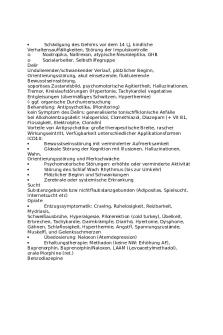
Test - test
- 1 Pages
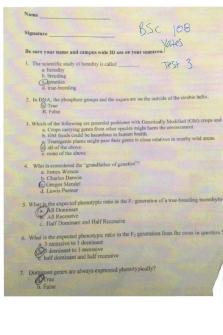
Yates Test 3 - Test
- 7 Pages
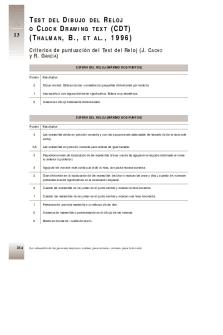
Test-reloj - test
- 4 Pages
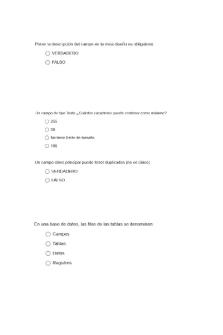
Test Access 2010 - Test
- 6 Pages
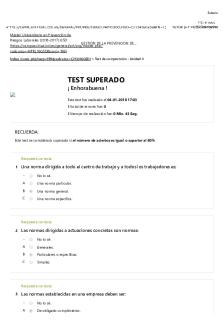
Resultado Test 842 - TEST
- 2 Pages
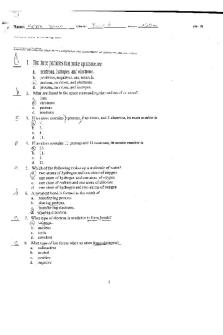
AP. Bio. Test - test
- 4 Pages
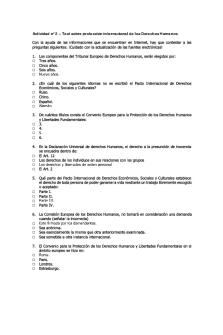
Test
- 4 Pages
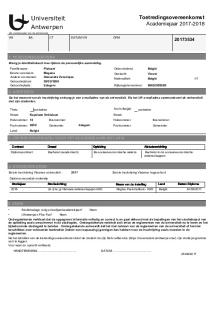
TEST
- 1 Pages

Chapter 4-test - test
- 23 Pages
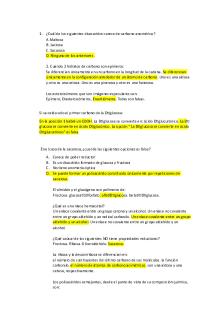
Test preguntas - test
- 4 Pages
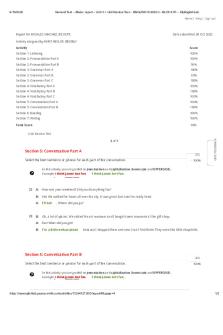
Test 3 - 5 - test
- 2 Pages

PET TEST Full Test
- 35 Pages
Popular Institutions
- Tinajero National High School - Annex
- Politeknik Caltex Riau
- Yokohama City University
- SGT University
- University of Al-Qadisiyah
- Divine Word College of Vigan
- Techniek College Rotterdam
- Universidade de Santiago
- Universiti Teknologi MARA Cawangan Johor Kampus Pasir Gudang
- Poltekkes Kemenkes Yogyakarta
- Baguio City National High School
- Colegio san marcos
- preparatoria uno
- Centro de Bachillerato Tecnológico Industrial y de Servicios No. 107
- Dalian Maritime University
- Quang Trung Secondary School
- Colegio Tecnológico en Informática
- Corporación Regional de Educación Superior
- Grupo CEDVA
- Dar Al Uloom University
- Centro de Estudios Preuniversitarios de la Universidad Nacional de Ingeniería
- 上智大学
- Aakash International School, Nuna Majara
- San Felipe Neri Catholic School
- Kang Chiao International School - New Taipei City
- Misamis Occidental National High School
- Institución Educativa Escuela Normal Juan Ladrilleros
- Kolehiyo ng Pantukan
- Batanes State College
- Instituto Continental
- Sekolah Menengah Kejuruan Kesehatan Kaltara (Tarakan)
- Colegio de La Inmaculada Concepcion - Cebu

